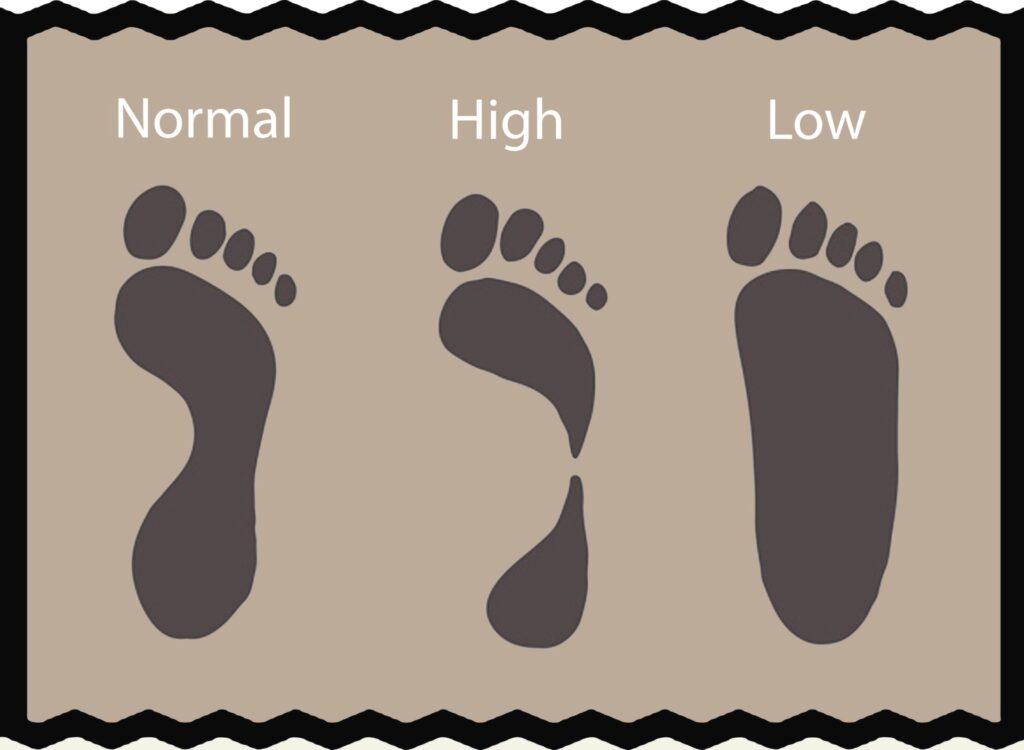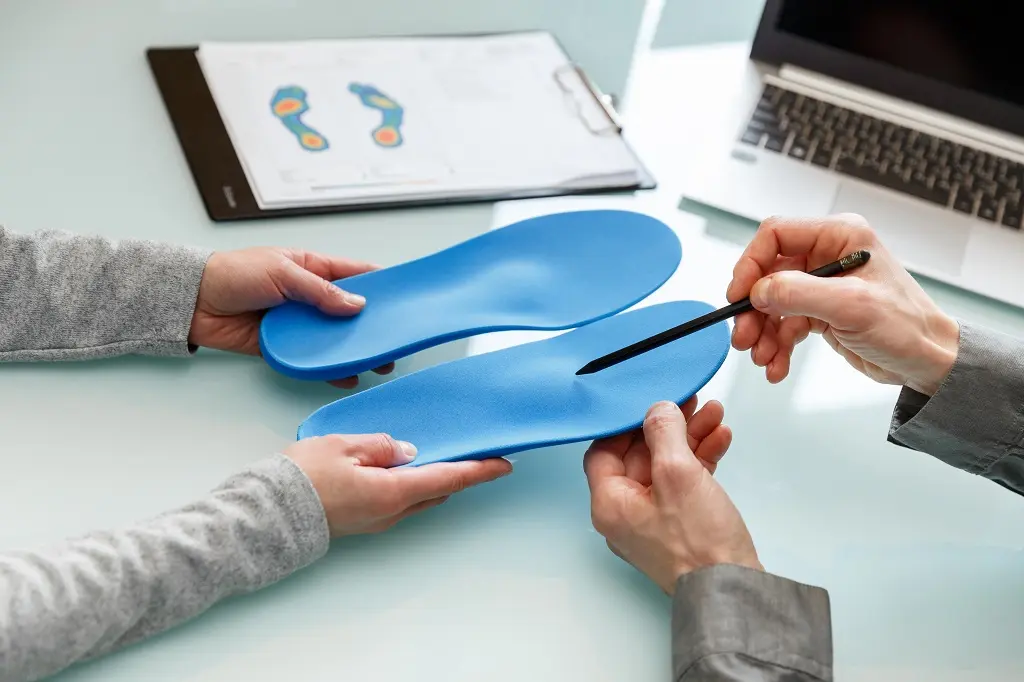Introduction: Understanding the Importance of Arch Support
Our feet are the foundation of our body, and often, the significance of proper care for them gets overlooked. Among the crucial elements contributing to foot health is the arch—an intricate structure that plays a pivotal role in supporting our body weight and absorbing shock during movement.
Anatomy of the Foot: Unraveling the Arch
Before we dive into the specifics of the arch, let’s establish a basic understanding of foot anatomy.
The foot is divided into three main sections:
- Forefoot: This includes the toes (phalanges) and the metatarsal bones.
- Midfoot: The midfoot is home to the five tarsal bones, forming the arches of the foot.
- Hindfoot: This section consists of the talus and calcaneus (heel bone).

Unveiling the Arch
The arches of the foot are perhaps the most unique and distinctive feature of our lower extremities. They are not flat like a piece of cardboard; instead, they have a graceful, curved structure that plays a crucial role in our daily activities.
There are three primary arches in the human foot:
1. Medial Longitudinal Arch
- This is the most prominent and essential arch of the foot.
- It runs along the inner edge of the foot, from the heel to the ball of the foot.
- It’s responsible for shock absorption during activities like walking and running.
2. Lateral Longitudinal Arch
- This arch runs along the outer edge of the foot.
- It is less pronounced than the medial arch but still contributes to foot flexibility.
3. Transverse Arch
- The transverse arch runs across the foot, perpendicular to the longitudinal arches.
- It provides stability and support, especially during weight-bearing activities.
The Arch’s Purpose
Now that we’ve identified the arches, let’s understand why they are so crucial:
- Weight Distribution: The arches distribute the body’s weight across the foot, ensuring even pressure on the bones, joints, and soft tissues.
- Shock Absorption: During activities like walking or running, the arches act as natural shock absorbers, reducing the impact forces that travel up the leg.
- Balance and Stability: The arches contribute to our balance and stability, allowing us to adapt to uneven terrain.
- Foot Flexibility: They enable the foot to adapt to various surfaces and accommodate changes in terrain.
Common Arch Problems
While the arches are essential for foot function, they can also be prone to problems:
Flat Feet
- Flat feet occur when the arches collapse, causing the entire sole of the foot to touch the ground.
- This condition can lead to discomfort and pain, requiring arch support.
High Arches (H3)
- High arches result from an exaggerated arch shape.
- They can make the foot less flexible, leading to issues like instability and foot fatigue.
The Role of Arch Support in Foot Health
Foot health is a crucial aspect of overall well-being, and one of the key elements that contribute to it is arch support. The arches of our feet play a pivotal role in maintaining balance, distributing weight, and absorbing shock during various activities. In this article, we will explore the significance of arch support in foot health and discuss how it can benefit individuals of all ages.
Understanding the Foot’s Arch (H2)
Before delving into the importance of arch support, let’s have a closer look at the structure of the foot’s arches.
The human foot comprises three main arches:
- Medial Longitudinal Arch (H3):
- This arch runs along the inner edge of the foot, from the heel to the ball of the foot.
- It is the most prominent and vital arch, responsible for shock absorption during activities like walking and running.
- Lateral Longitudinal Arch (H3):
- The lateral arch runs along the outer edge of the foot.
- Although less pronounced than the medial arch, it contributes to foot flexibility and stability.
- Transverse Arch (H3):
- The transverse arch runs across the foot, perpendicular to the longitudinal arches.
- It provides essential support and stability, especially during weight-bearing activities.

The Importance of Arch Support (H2)
Why is arch support so critical for foot health? Let’s explore the reasons:
- Even Weight Distribution (H3):
- Arch support helps distribute the body’s weight evenly across the foot, reducing the risk of pressure points and discomfort.
- Shock Absorption (H3):
- During activities like walking or running, the arches act as natural shock absorbers, cushioning the impact forces that travel up the leg and spine.
- Alignment and Stability (H3):
- Proper arch support aligns the foot, ankle, and leg, promoting better overall posture and stability.
- Preventing Overpronation and Supination (H3):
- Arch support can help correct or prevent overpronation (excessive inward rolling of the foot) and supination (excessive outward rolling), reducing the risk of injuries.
The Role of Arch Support in Daily Life (H2)
Arch support isn’t limited to athletes or individuals with existing foot problems. It benefits people from all walks of life:
1. Everyday Comfort (H3)
- Proper arch support in daily footwear, such as shoes and sandals, enhances comfort during routine activities.
2. Active Lifestyles (H3)
- Athletes and fitness enthusiasts rely on arch support to optimize their performance and reduce the risk of injuries.
3. Prevention and Rehabilitation (H3)
- Individuals with foot conditions like flat feet or plantar fasciitis often use arch support to manage symptoms and aid in recovery.
4. Aging Gracefully (H3)
- As we age, our arches may lose some of their natural support. Arch support can alleviate discomfort and promote mobility in older individuals.
Finding the Right Arch Support
Arch support is a critical component of foot health, providing stability, comfort, and balance. However, not all arch supports are created equal, and finding the right one for your specific needs can make a significant difference in your overall comfort and well-being. In this article, we will guide you through the process of finding the perfect arch support tailored to your individual requirements.
Understanding Your Arch Type (H2)
Before you begin the search for arch support, it’s essential to identify your arch type. There are three primary arch types:
- High Arches (H3):
- High arches have a noticeable upward curve.
- They require cushioning and support to alleviate pressure points.
- Normal Arches (H3):
- Normal arches have a moderate curve and distribute weight evenly.
- Proper footwear with moderate arch support is usually sufficient.
- Flat Arches (H3):
- Flat arches have little to no curve, causing excessive pronation.
- Individuals with flat arches benefit from strong arch support to prevent discomfort and injuries.

Choosing the Right Arch Support (H2)
Once you’ve determined your arch type, it’s time to select the appropriate arch support:
1. Insoles (H3)
- Insoles or orthotic inserts come in various designs to cater to different arch types.
- High arches benefit from cushioned insoles with arch support.
- Normal arches generally require insoles with moderate support.
- Flat arches require robust arch support with extra cushioning.
2. Footwear (H3)
- Many shoe brands offer styles with built-in arch support.
- Look for shoes that align with your arch type.
- Consider athletic shoes, casual footwear, and even dress shoes with arch support options.
3. Custom Orthotics (H3)
- For individuals with unique foot anatomy or specific medical conditions, custom-made orthotics may be the best solution.
- A podiatrist can assess your needs and create custom orthotics tailored to your feet.
Trying Before Buying (H2)
When shopping for arch support, it’s essential to try different options to ensure the perfect fit:
- Test Walk (H3):
- When trying on footwear or insoles, take a few steps to evaluate comfort and support.
- Ensure that the arch support aligns with your natural arch shape.
- Ask for Expert Advice (H3):
- Consult a shoe specialist or podiatrist for recommendations.
- They can provide valuable insights and help you find the right arch support for your needs.
Maintaining Your Arch Support (H2)
Once you’ve found the right arch support, it’s crucial to care for it:
- Regular Cleaning (H3):
- Clean your insoles or orthotics regularly to prevent odor and maintain hygiene.
- Replace as Needed (H3):
- Over time, arch supports may wear out or lose effectiveness.
- Replace them when you notice reduced support or comfort.
Conclusion
Finding the right arch support is essential for maintaining foot health and comfort. By understanding your arch type, selecting the appropriate insoles, footwear, or custom orthotics, and trying them out before purchase, you can ensure that your feet receive the support they need. Remember to care for your arch supports to maximize their lifespan and continue enjoying the benefits of proper arch support.
FAQs
1. How can I identify my arch type?
- You can determine your arch type by consulting a podiatrist or conducting the “wet test.” Wet your foot and step onto a piece of paper. The shape of your footprint can indicate your arch type.
2. Are over-the-counter insoles effective for arch support?
- Over-the-counter insoles can provide effective arch support for many people. However, individuals with specific foot conditions or unique needs may benefit from custom orthotics.
3. Can I transfer insoles between different pairs of shoes?
- Insoles can be transferred between shoes as long as they fit comfortably and do not alter your gait or cause discomfort.
4. How often should I replace my arch supports?
- The lifespan of arch supports varies depending on usage and materials. Generally, consider replacing them every 6 to 12 months or when you notice reduced support and comfort.
5. Are there specific brands known for high-quality arch support products?
- Several reputable brands offer quality arch support products, including Superfeet, Powerstep, Dr. Scholl’s, and many athletic shoe brands. It’s essential to research and choose products that suit your needs.
